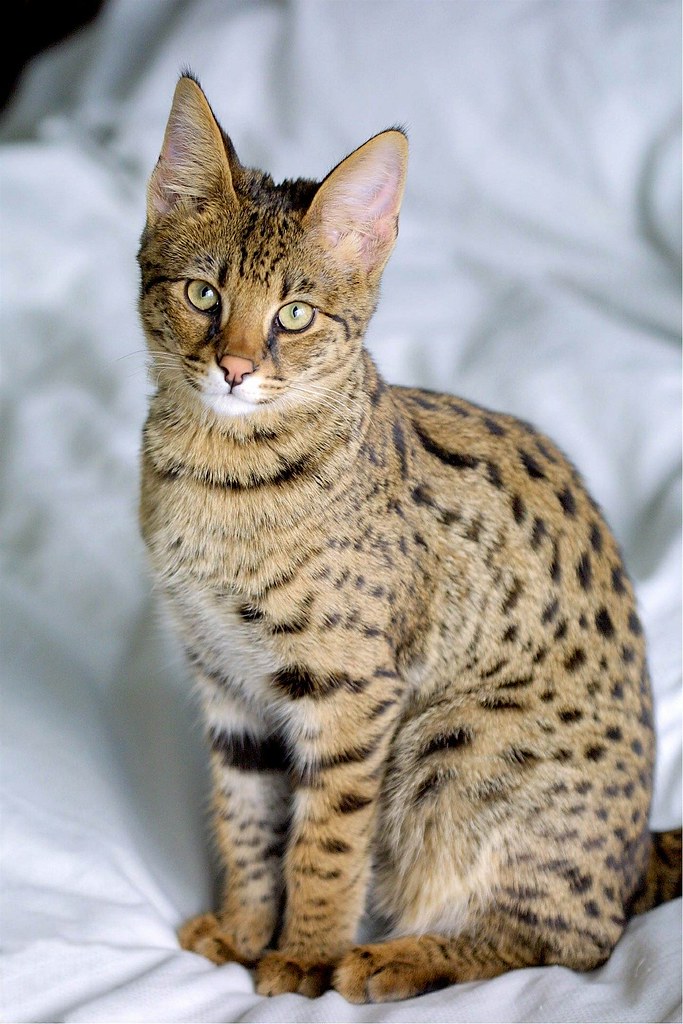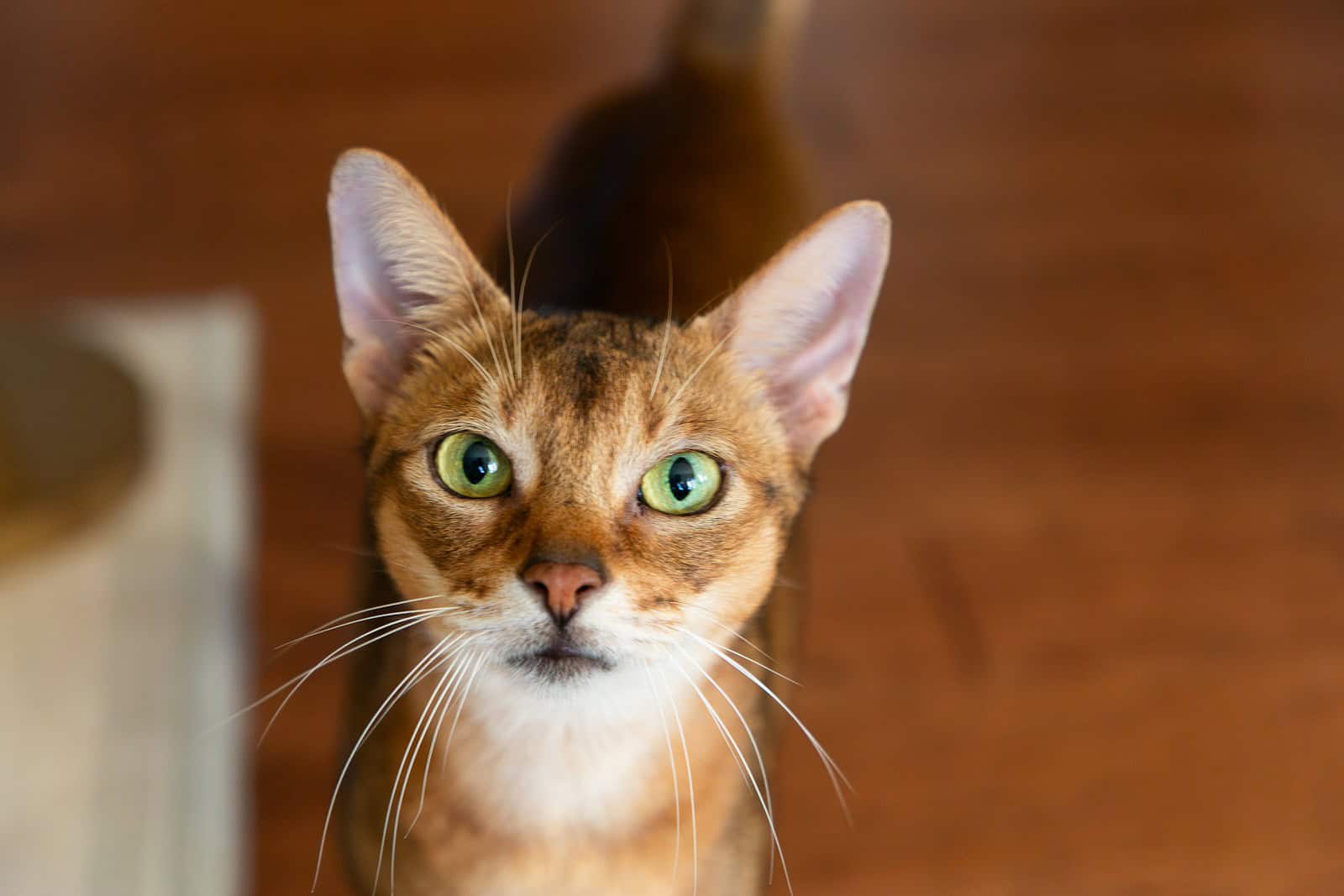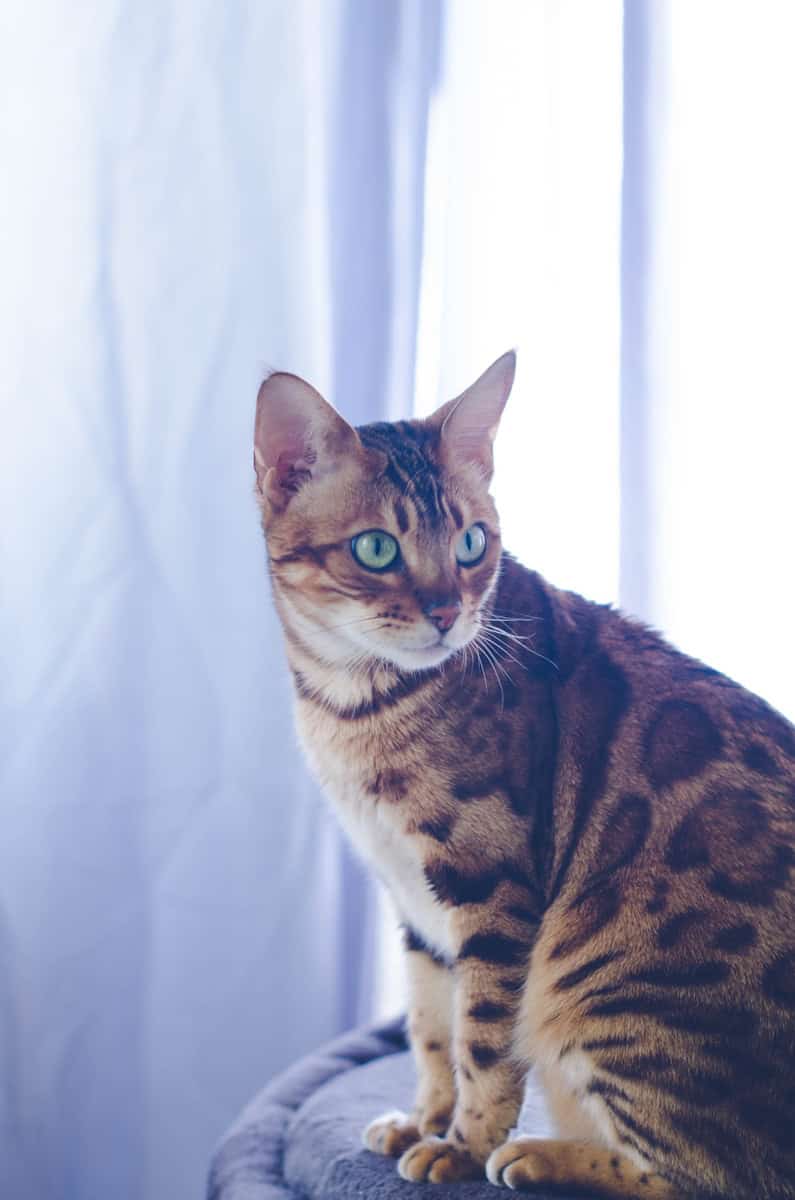Features
Hair loss

Child-friendliness

Speech

Hugging

Health

Activity

Have you ever been curious about the mysterious and exotic cat breed Savannah? It’s no surprise that these fascinating creatures are becoming increasingly popular among cat lovers around the world. From their unique looks to their playful personalities, there is so much to discover about these elegant felines.
Step into the world of the Savannah cat as we explore all the aspects that make this breed so special. From their origins and history to their ideal living conditions and care, this blog post will provide you with everything you need to know to better understand these wonderful animals.
History and origins of the Savannah cat
The history of the Savannah cat is relatively short, but fascinating. This unique breed originated in the 1980s, when breeder Judee Frank and her partner crossed an African leopard cat (serval) with a domestic cat, among others. The result was a hybrid kitten with the slender build and speckled coat patterns of a serval, combined with the friendly nature of a domestic cat. These first generations, designated F1 and F2, still have a large percentage of wild genetic material, making them particularly exotic.
After the initial crosses, the Savannah cat was further bred to stabilize both physical characteristics and temperament traits. In 2001, The International Cat Association (TICA) officially recognized the Savannah as a breed, allowing breeders worldwide to register their cats. Since then, there have been several generations of Savannah cats (up to F5+), with the genetic link to the original serval gradually diminishing, but maintaining its exotic appearance. The name “Savannah cat” refers not only to the vista of the African savannah, but also establishes a link with the graceful serval that lives there.
Appearance and physical characteristics
The Savannah cat immediately stands out for her remarkable height, muscular body and distinctive spotting pattern. She has a slender, athletic build reminiscent of her wild ancestor, the serval. The head is relatively small relative to the body, with large, oval eyes that are often green or gold in color. The ears are set high, large and pointed slightly forward, contributing to their alert appearance.
The coat pattern of a Savannah cat ranges from brown speckled to black overlay, depending on generation. F1 and F2 cats often have larger, irregular spots reminiscent of a serval. Later generations sometimes show smaller, denser spots. The coat itself is short to semi-long, glossy and silky to the touch. In addition, a Savannah’s legs are relatively long, especially in earlier generations, emphasizing their stretched, graceful gait. These impressive physical features make the Savannah cat one of the most exotic domestic cats in the world.
Temperament and behavior
A Savannah cat combines the curiosity of a domestic cat with the playfulness of a wild serval. It is known for its energetic nature and desire for stimulation. Compared to other domestic cats, Savannah cats tend to be more active and require more exercise and mental challenge. A proper balance of play, climbing and exploration is therefore essential to prevent boredom and destructive behavior.
Despite their wild genetic background, the Savannah cat usually develops a strong bond with their owner. They are loyal and can be quite vocal: meowing, chirping and even roaring to demand attention. Their intelligence allows them to learn tricks, open doors and sometimes even talk to their owners. At the same time, they maintain a certain independence, which means that they do not need to lie in your arms all the time, but rather like to actively participate in family activities.
Ideal living conditions for a Savannah cat
A Savannah cat needs space to express itself physically in addition to sufficient mental stimulation. An apartment without climbing and scrambling opportunities is usually not adequate. It is recommended to install a sturdy scratching post, wall racks and climbing walls so that your cat can follow its natural hunting and climbing motivation. In addition, Savannah cats thrive on access to a secure outdoor run or enclosed yard, where they can run and play in a controlled manner.
Furthermore, it is important that the habitat be rich in toys that respond to their catching instinct: laser pens, fishing rod games and interactive puzzles are favorites. Because the Savannah cat becomes strongly attached to family members, it deserves daily attention and social interaction. A quiet household without too much noise or other pets may be ideal, although some cats also get along fine with dogs after they are properly introduced. In short, the ideal home for a Savannah cat combines space, challenge and loving attention.
Dealing with other pets and children
It is crucial to carefully consider the handling of Savannah cats with other pets and children. Because of their active and playful nature, they get along well with children and other pets, provided they are properly introduced and socialized. It is advisable to acclimatize slowly to new environments and ensure that all interactions are supervised to avoid unwanted situations. With patience and loving guidance, Savannah cats can live harmoniously with other members of the household.
Care of a Savannah cat
Grooming a Savannah cat is relatively easy thanks to their short to medium-length coat, but does require regularity. Weekly brushing helps remove loose hair and keep the skin and coat healthy. This is also a great time for quality time with your cat and strengthens your bond. When brushing, always check for tangles or skin irritations, especially around the neck and armpits.
In addition to coat care, it is essential to keep Savannah cats’ ears clean; their large ear canals allow dirt to accumulate easily. Use a damp, soft cloth for this purpose and avoid pushing deep into the ear canal. Brushing teeth also contributes to good oral hygiene and prevents tartar. Offer regular chew toys and consider special toothpaste for cats. Finally, nail care is necessary: cut or file nails to prevent them from becoming too long and causing torment.
Health care and possible disorders
In general, Savannah cats are robust and healthy, but there are some conditions to be alert to. Because of their wild disposition, they may be more susceptible to certain genetic disorders. Hypertrophic cardiomyopathy (HCM), a condition in which the heart muscle thickens, occurs in several cat breeds and should be checked periodically with ultrasound. It is also wise to monitor their kidney function, as cats are prone to kidney problems later in life.
Regular visits to the veterinarian for vaccinations, deworming and general health checks are essential. Because the Savannah cat has an active lifestyle, a balanced diet with adequate protein is essential to maintain muscle and overall condition. Consult with your veterinarian about the best dietary options and adjust portions based on activity and age. With proper care and preventive measures, your Savannah cat can live a healthy and happy life, often up to 12-20 years.
Conclusion
The Savannah cat is an exceptional breed that combines the graceful appearance of a wild serval with the loving trait of a domestic cat. Their exotic looks, playful nature and strong bond with their owners make them a special addition to any household willing to invest in space and incentives.
With proper care, health monitoring and a challenging living environment, you can enjoy the unique charming presence of the Savannah cat for many years to come.



